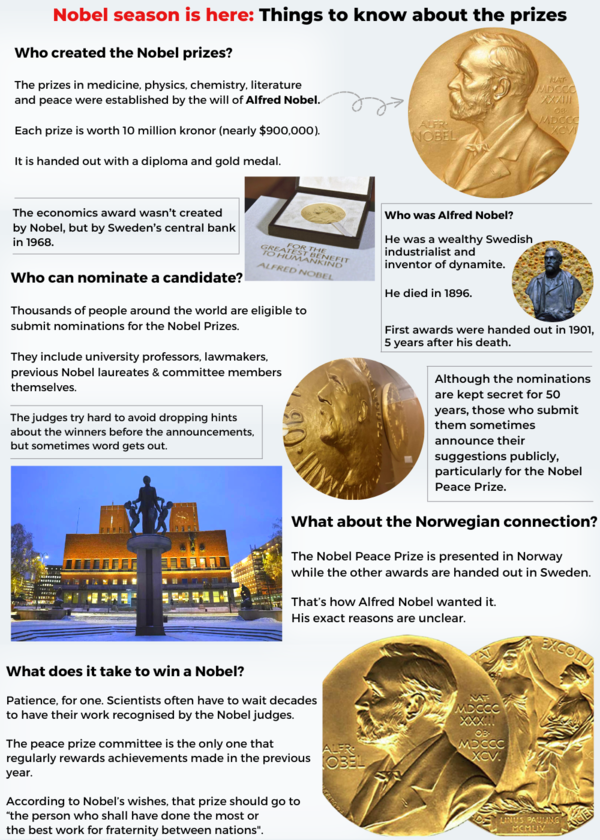Frenchman Alain Aspect, American John F Clauser and Austrian Anton Zeilinger were cited by the Royal Swedish Academy of Sciences for discovering the way that unseen particles, such as photons, can be linked or “entangled”, with each other even when they are separated by large distances, a field that unsettled Albert Einstein himself, who once referred to it in a letter as “spooky action at a distance”.
What is Quantum Mechanics?
Classical physics tells us that two objects cannot occupy the same space at the same time. Until the early 20th century, it was believed that this was a fundamental law of physics followed by everything in nature. But then scientists began studying particles like atoms, electrons and light waves, which did not appear to obey these laws. And so, the field of quantum mechanics was born, pioneered by Max Planck, Neils Bohr and Albert Einstein, in an attempt to investigate the “quirky” laws that did bind such particles.
Quantum mechanics, for instance, tells us light can be both a particle and a wave – depending on how it is observed. But until it is observed, light is neither a particle nor a wave. This lack of definition led Einstein to remark, “God does not play dice with the universe”. Since then, physicists have been investigating the laws that govern this uncertainty.
A leap forward for Quantum Mechanics
Quantum mechanics, unlike classical physics, allows two or more particles to exist in an entangled state – what happens to one particle in an entangled pair determines what happens to the other, even if the particles are at a great distance from each other. Physicists initially believed that this coordination was the result of hidden variables – Einstein described it as “spooky action at a distance”.
But in the 1960s, John Stewart Bell found that there aren’t any hidden variables at play – in fact, the coordination between entangled particles is a matter of chance when measuring the properties of one of the particles.
Bell developed a mathematical inequality that says, “if there are hidden variables, the correlation between the results of a large number of measurements will never exceed a certain value”. However, quantum mechanics shows that it is possible to exceed this value, resulting in a greater correlation between the result than is possible through hidden variables.
Exceeding this value proves that there is no unexplained “spooky action” and that the world is governed by quantum mechanics.
Over a span of several decades, this year’s Nobel laureates have built on Bell’s work. American physicist John Clauser developed a realistic experiment by passing entangled photons through polarisation filters (commonly used in sunglasses to block light at certain angles) to test Bell’s inequality. His experiments showed a clear violation of Bell’s inequality, confirming that there were no hidden variables at play.
But Clauser’s experiment had its limitations — the settings for measuring the entangled photons passing through the polarisation filters were fixed, meaning it was possible that the experimental setup itself may have been unable to detect some particles that were controlled by hidden variables. Alain Aspect, a French physicist at the Universite Paris-Saclay, sought to develop an experiment that removed this potential bias by changing the measurement settings only after the entangled photons left their source so that the setup itself would not impact the results.

Anton Zeilinger, an Austrian physicist at the University of Vienna, was among the first to explore quantum systems that use more than two entangled particles, which now form the basis of quantum computation and allow entangled particles to be manipulated. Among his most notable achievements is the discovery of quantum teleportation, which allows particles to take on even unknown quantum characteristics from other particles over long distances.
But what do these advances in quantum mechanics mean for the world? Transistors and lasers were developed as a result of the first quantum revolution.
In this new era, the ability to manage and manipulate systems of entangled particles will give researchers better tools to “construct quantum computers, improve measurements, build quantum networks and establish secure quantum encrypted communication”. Quantum computers can perform complex calculations that are far beyond the capabilities of conventional computers, which rely on binary signals (1s and 0s) to store and process information. Already, quantum computing has shown promise in chemical and biological engineering and cybersecurity. Areas like artificial intelligence and Big Data also stand to benefit from computing systems that can handle large datasets and run complex simulations.





